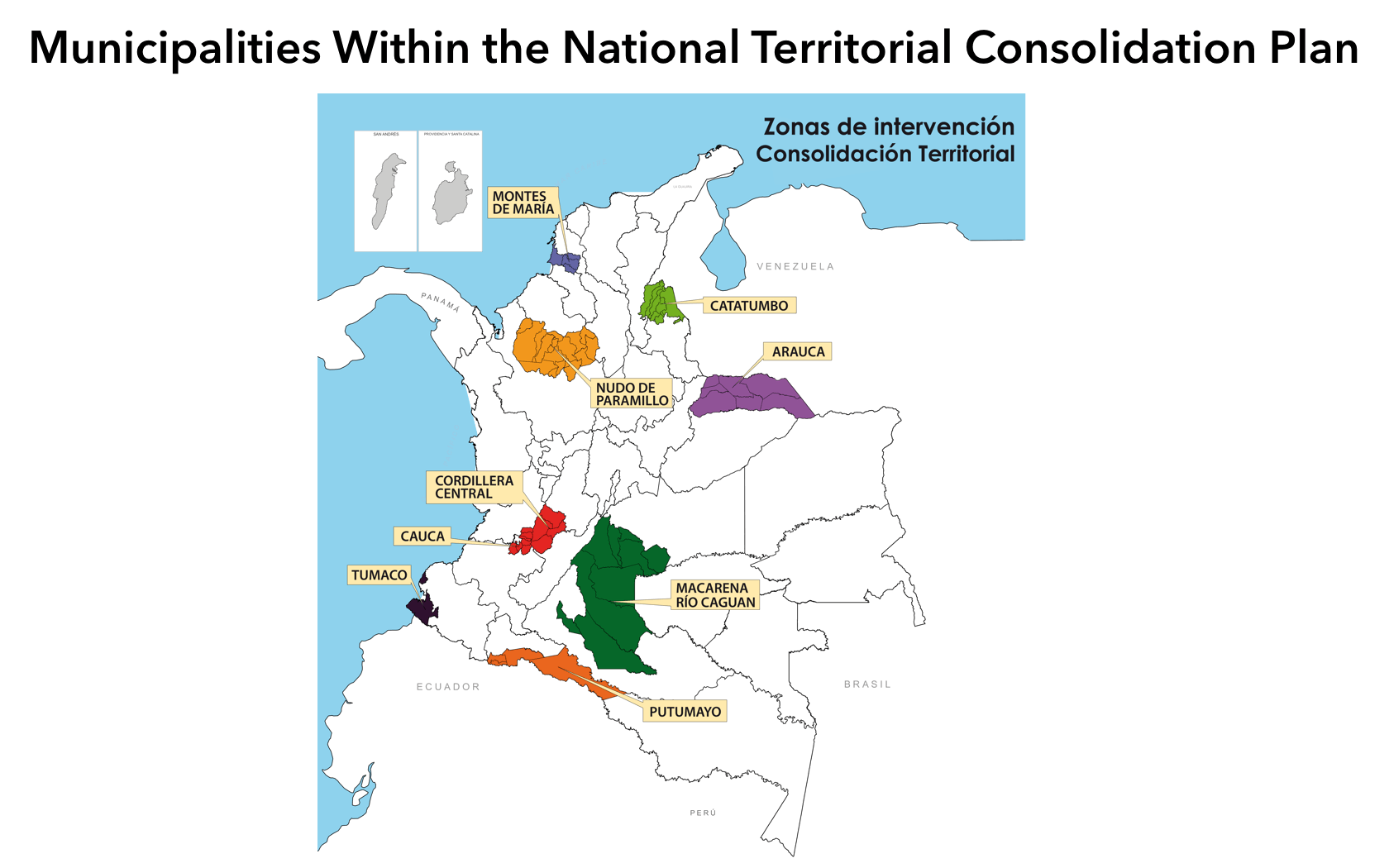Past Frustrations
Implementing peace accords, and thus preventing any resurgence of social conflict, will require a break with Colombia’s unfortunate history of leaving large amounts of territory stateless and abandoned. Colombia’s leaders have long recognized that statelessness in the periphery is a problem, but past efforts to address it by bringing in government agencies have fallen flat.
These include 1960s efforts to settle farmers in “agricultural frontier” zones, a 1980s “National Rehabilitation Plan,” and, most recently, a National Territorial Consolidation Plan (PNCT). The PNCT, viewed as a follow-on component of Plan Colombia, went into effect after 2006 and benefited from generous levels of U.S. military and non-military assistance. (During the program’s most intense period, WOLA posted much information about it at a site called ccai-colombia.org.)
(Text continues below the map)

Focusing on seven zones around the country, the PNCT sought to bring the government in through a phased, coordinated introduction first of military force, to create security conditions, then the civilian part of the state, to provide services. The Plan made some initial progress around 2007-2011 especially in the La Macarena zone to the south of Bogotá, but it quickly declined as civilian agencies failed to provide personnel and resources. Reasons included the programs’ leaders’ lack of budgetary authority, agencies’ reluctance to invest in sparsely populated areas when they faced greater needs elsewhere, a lack of technical expertise, and the Juan Manuel Santos government’s lack of attention, as key officials left the program to work on the FARC peace process. The Colombian government still has a “Consolidation Unit” today, but it is smaller, receives far less U.S. assistance, and does not coordinate as closely with the security forces as it did half a decade ago.
Today, as the New York Times documented in June 2015, even the showcase La Macarena zone has seen a deterioration in security conditions and illicit crop cultivation. The PNCT experience offers no off-the-shelf blueprint for peace accord implementation. But it offers crucial lessons on the need for budgetary authority, a long-term commitment, strong top-level leadership, civil society involvement, a minimal military role, incentives for state implementers, and work with local authorities.
 15
15